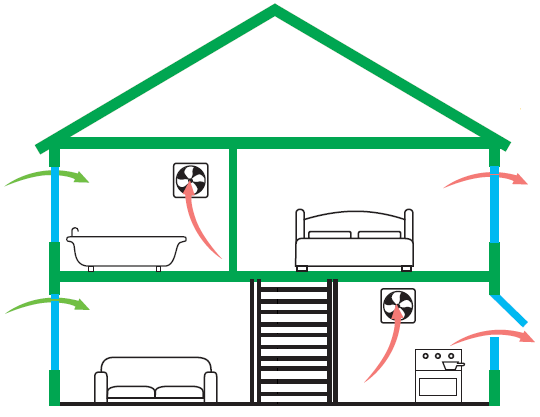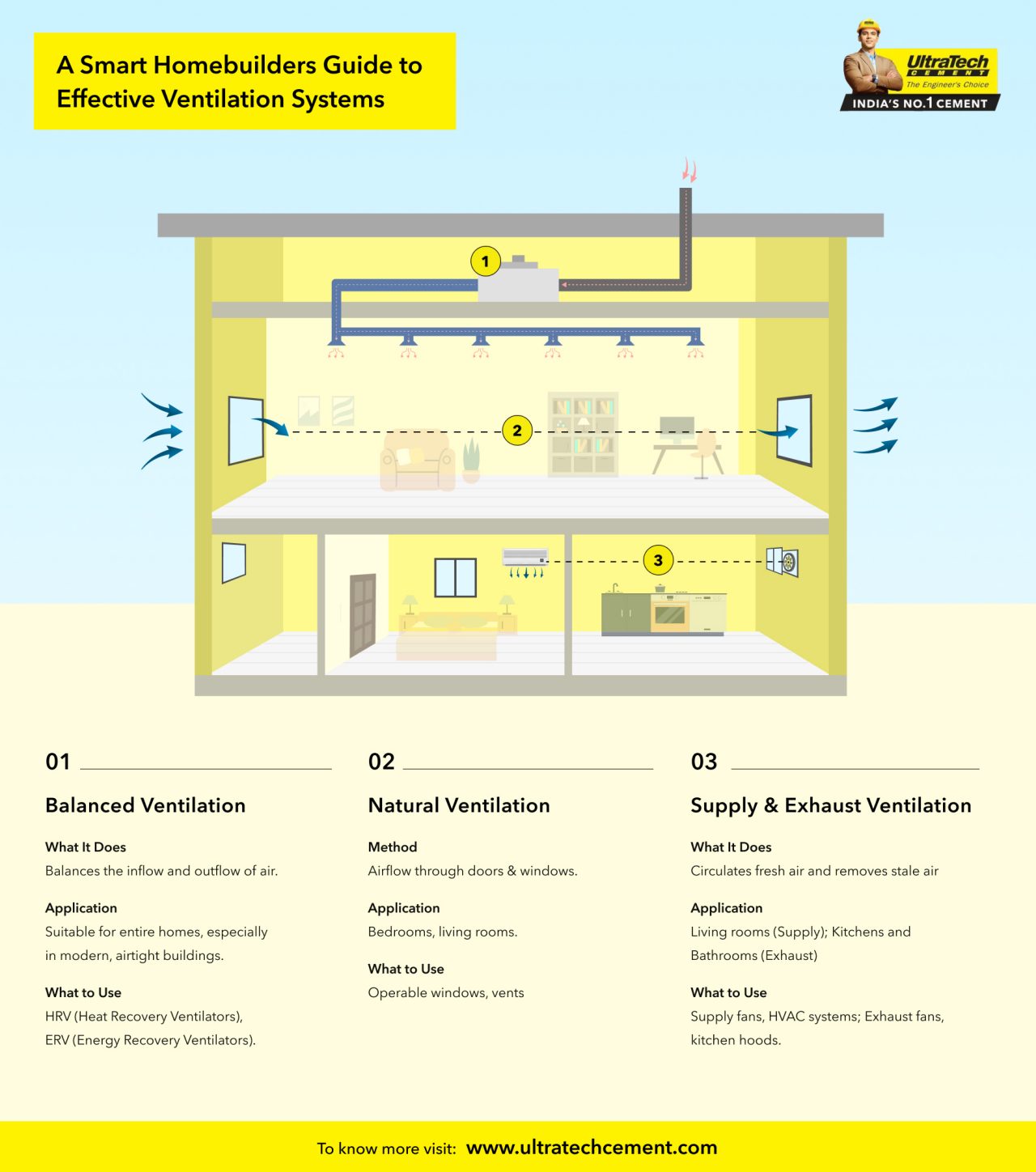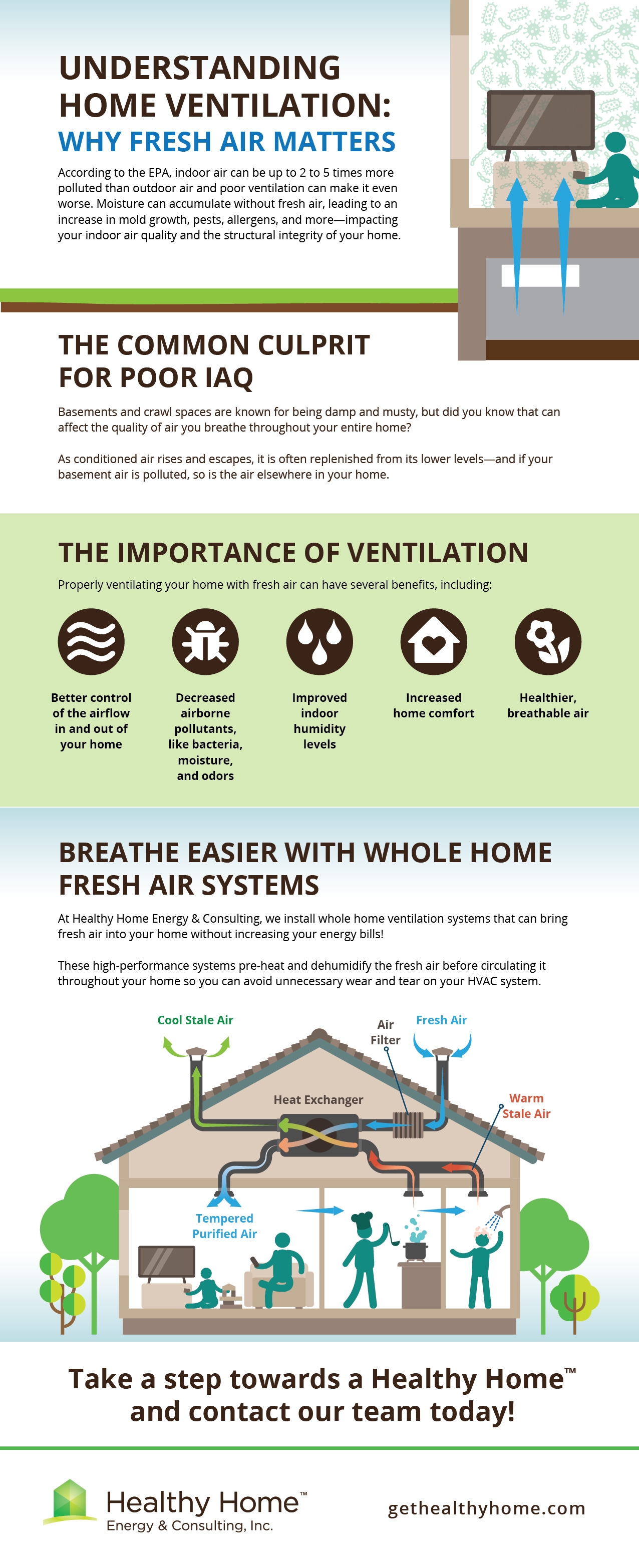Home Ventilation Melbourne: Essential Tips Every Homeowner Should Know
Wiki Article
Recognizing the Value of Home Air Flow for a Healthier Living Setting
Home ventilation plays a necessary function in maintaining a healthy living setting. It helps with the exchange of outside and indoor air, which is essential for boosting air quality. Without correct air flow, homes can become reproducing grounds for irritants and toxins. The repercussions of inadequate air circulation can be considerable. This raises the inquiry of how homeowners can successfully carry out ventilation techniques to secure their wellness and health. Recognizing these approaches is essential.
The Basics of Home Ventilation
Home ventilation offers as a necessary component of interior air high quality and comfort. It includes the procedure of exchanging stagnant indoor air with fresh exterior air, thereby decreasing humidity and controlling temperature. Appropriate air flow systems can consist of natural techniques, such as open home windows and vents, in addition to mechanical systems, such as exhaust followers and air exchangers. Reliable home air flow helps avoid concerns like indoor mold and mildew development and the build-up of dangerous bits. It also enhances total energy performance, as well-ventilated areas can maintain comfy temperatures with much less dependence on heating and cooling systems. Comprehending the basics of home air flow is crucial for property owners looking for to develop a much healthier living environment on their own and their households.
Common Sources of Indoor Air Air Pollution

Several may not understand it, indoor air pollution can originate from various sources within a household. Common factors include volatile organic substances (VOCs) sent out from paints, solvents, and cleaning items. Family devices, such as gas ovens and fire places, can release damaging gases like carbon monoxide gas and nitrogen dioxide. Additionally, mold and mold thrive in wet areas, releasing spores that impact air quality. Pet dog dander, dust termites, and pollen can collect indoors, more exacerbating air pollution levels. Smoking inside your home creates poisonous chemicals that remain airborne. Constructing materials, including asbestos and formaldehyde, can off-gas hazardous materials. Identifying these sources is important for preserving a healthier indoor environment and advertising efficient air flow approaches.
Health And Wellness Results of Poor Air Flow
Interior air contamination can have considerable health implications, especially when ventilation is insufficient. Poor air flow can lead to the build-up of dangerous toxins, such as unpredictable natural compounds, mold and mildew, and particle issue. This accumulation might result in breathing issues, consisting of bronchial asthma, allergic reactions, and persistent obstructive lung condition. People might experience symptoms like migraines, tiredness, and inflammation of the eyes, nose, and throat. Prone populaces, such as youngsters and the elderly, go to higher danger for extreme health effects. Long-lasting direct exposure to inadequately aerated environments can also add to more major problems, including heart diseases. Making sure appropriate air flow is vital for maintaining a healthy living environment and lowering the risk of wellness difficulties linked with indoor air pollution.Efficient Ventilation Methods for Your Home
Appropriate ventilation is essential for maintaining a healthy indoor setting, and carrying out effective approaches can significantly enhance air high quality. House owners can start by guaranteeing that exhaust followers are installed in bathroom and kitchens to get rid of excess dampness and odors. Opening windows consistently enables fresh air to flow, specifically during moderate weather. Additionally, using air purifiers with HEPA filters can aid record airborne pollutants. For homes with heating and cooling down systems, maintaining heating and cooling systems and transforming filters consistently is vital for peak efficiency. Including natural air flow methods, such as cross-ventilation, can also boost air flow. Securing any kind of leakages in doors and windows stops unwanted drafts, which can disrupt controlled air movement, ultimately leading to improved interior air top quality and convenience.Maintaining Optimal Air Quality Year-Round
To maintain excellent air quality year-round, home owners should take on an aggressive strategy to handling their interior environment. Routinely keeping track of indoor air top quality is vital; this includes monitoring for contaminants such as dirt, mold and mildew, and unpredictable organic substances (VOCs) Implementing effective air flow systems, such as exhaust fans and air cleansers, can greatly minimize airborne impurities. Furthermore, routine upkeep of HVAC systems assurances peak efficiency and air circulation. House owners need to likewise think about moisture degrees, as too much wetness can result in mold and mildew growth. Seasonal changes may demand changes in ventilation strategies to accommodate differing outside air top quality. By prioritizing these methods, house owners can produce a much healthier living area, advertising general wellness for all residents throughout the year.Regularly Asked Questions
Just How Can I Tell if My Home Demands Better Air Flow?
To identify if a home needs much better ventilation, one ought to observe signs such as consistent humidity, mold and mildew development, mildewy odors, condensation on windows, or raised allergic anchor reaction signs and symptoms, indicating insufficient air flow and potentially poor indoor air high quality.What Are the Signs of Poor Indoor Air Quality?
find here
Can Houseplants Improve Indoor Air Top Quality Efficiently?
The efficiency of houseplants in boosting interior air high quality is discussed. While some research studies suggest they can take in contaminants and create oxygen, their overall impact may be marginal contrasted to correct ventilation and air filtering systems.Exactly how Frequently Should I Adjustment My Air Filters?
The regularity of air filter adjustments normally relies on use and filter kind. Normally, it is recommended to replace filters every 3 months, though households with pet dogs or allergies may need even more regular modifications for ideal performance.Are There Any Kind Of Details Air Flow Equipments for Allergy Sufferers?
Lots of ventilation systems, such as HEPA-filtered systems, properly decrease allergens airborne. Home Ventilation Melbourne. These systems catch dirt, pet, and plant pollen dander, providing allergy sufferers with a cleaner, healthier interior environment while handling air high quality successfully
It helps with the exchange of outdoor and indoor company website air, which is important for boosting air high quality. Home ventilation serves as an essential element of indoor air quality and comfort. It involves the process of exchanging stale interior air with fresh outdoor air, therefore lowering humidity and regulating temperature level. Indoor air contamination can have substantial health implications, especially when ventilation is inadequate. Proper ventilation is important for maintaining a healthy indoor setting, and applying efficient strategies can significantly boost air high quality.
Report this wiki page